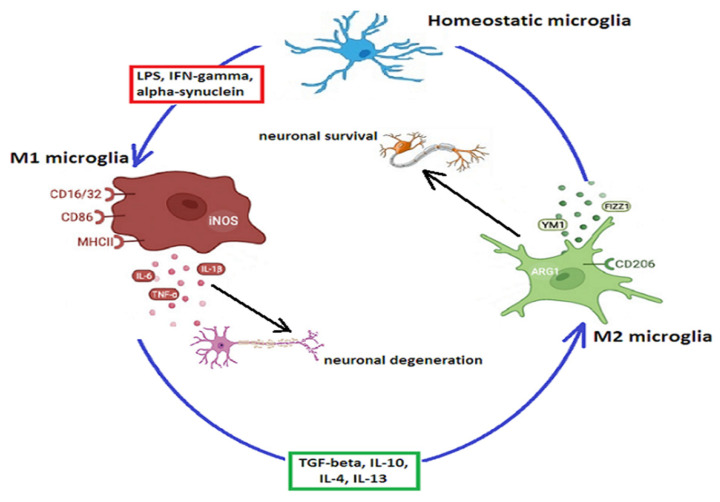Figure 1.
M1 and M2 microglial phenotypes. Normally, microglia exhibit the resting, homeostatic phenotype. Pathogens, such as LPS, α-synuclein, or other misfolded proteins, as well as interferon-γ, shift microglia toward the M1 pro-inflammatory phenotype, which produces ROS and pro-inflammatory cytokines such as IL-6, IL-1β, NOS, or TNF-α, with subsequent neuronal degeneration. Cytokines such as TGF-β, IL-10, IL-4, or IL-13 lead to the transition of the microglial M1 phenotype to the anti-inflammatory M2 phenotype, which promotes neuronal survival by secreting anti-inflammatory cytokines such as FIZZ1 or YM1. Abbreviations: Arg1—arginase-1; CD—mannose receptors (cluster of differentiation); FIZZ1—found in inflammatory zone protein 1; IFN—interferon; IL—interleukin; LPS—lipopolysaccharides; MHC—major histocompatibility complex molecules; NOS—nitric oxide synthase; TGF—tumor growth factor; TNF—tumor necrosis factor; Ym1—chitinase-3 like-3 (in rodents known as YM1).

